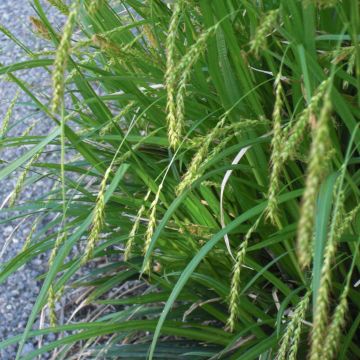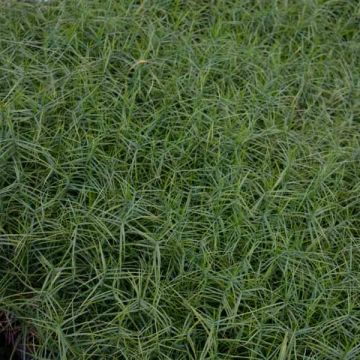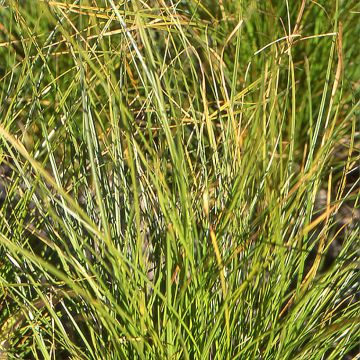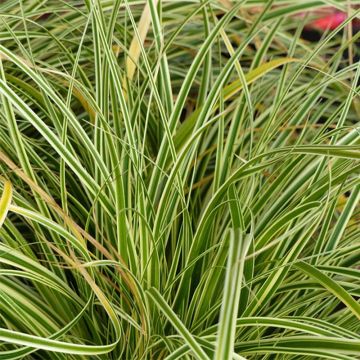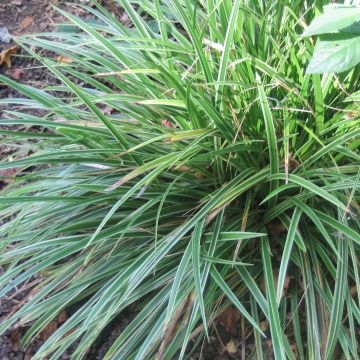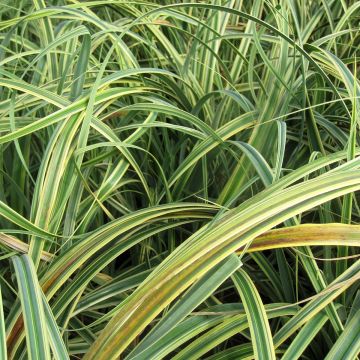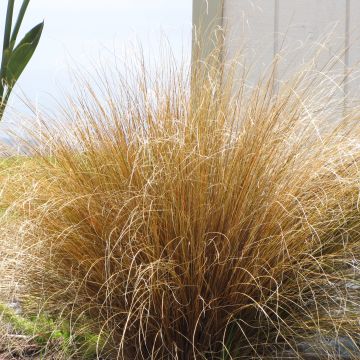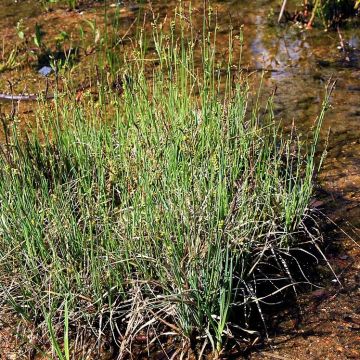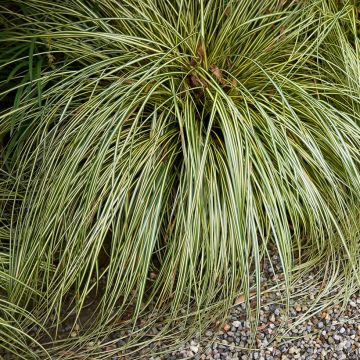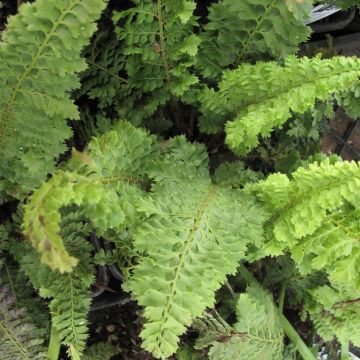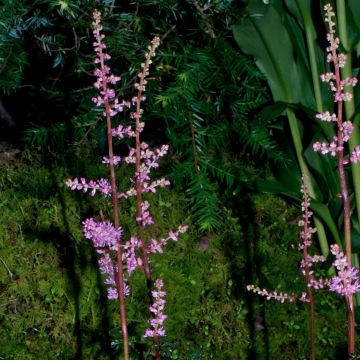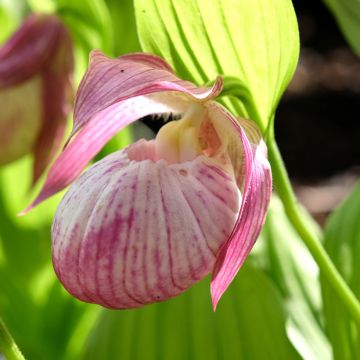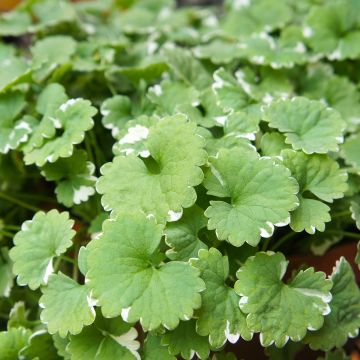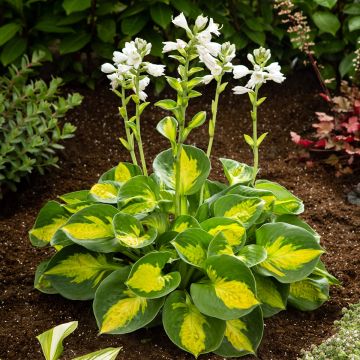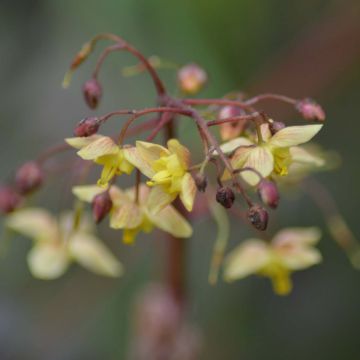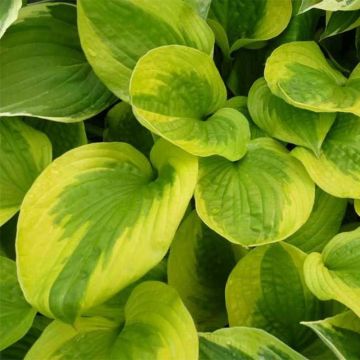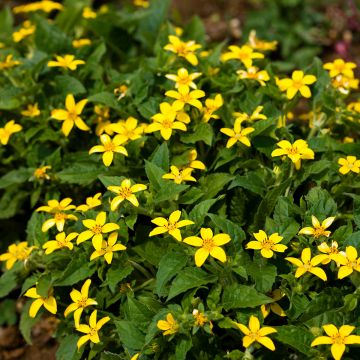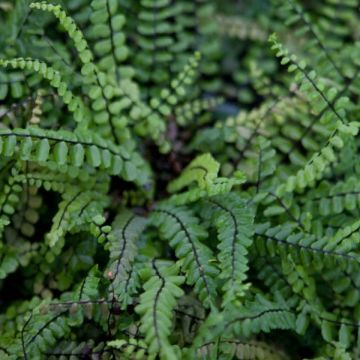

Carex muskingumensis Oehme
Carex muskingumensis Oehme
American Sedge
This item cannot be shipped to the selected country
Delivery charge from €5.90
More information
Schedule delivery date,
and select date in basket
This plant carries a 12 months recovery warranty
More information
We guarantee the quality of our plants for a full growing cycle, and will replace at our expense any plant that fails to recover under normal climatic and planting conditions.
From €5.90 for pickup delivery and €6.90 for home delivery
Express home delivery from €8.90.
Does this plant fit my garden?
Set up your Plantfit profile →
Description
Carex muskingumensis 'Oehme' is distinguished by its foliage starting medium green in spring and then developing thin, yellow margins. It is a palmate sedge with leaves typically arranged radially and horizontally along long, flexible stems, making them resemble small palm trees. It thrives in rich, cool to moist environments, exposed to sun or shade, making it an ideal plant for pond edges or woodlands in natural-style gardens. It has a rapid growth rate. Once established, this sedge will form a lush cover along paths or in shaded beds, and will even tolerate temporary droughts.
Carex muskingumensis is a perennial gramineous plant, belonging to the Cyperaceae family. It is native to the woodlands and wet plains of the American Midwest. It prefers rich, cool to wet locations, even occasionally waterlogged, without preference for exposure. In hot and dry summers, it needs soil that remains minimally moist. Perfectly hardy, this semi-evergreen sedge tends to thin out during the harshest winters. It compensates by rapidly growing from spring onwards to adorn the garden with its beautiful foliage throughout the year.
The 'Oehme' variety is a mutation of the species, discovered in Wolfgang Oehme's garden in Maryland, United States. Smaller in size, it reaches about 60cm (24in) in height and 40cm (16in) in spread. It forms vigorous clumps, which are initially quite short, with ground-level foliage, followed by vigorous and erect culms. The stems bear abundant medium green foliage finely margined with yellow, which is more intense in summer. The leaves are flexible and slender, arranged almost horizontally and radially on the stems, which themselves end in small golden brown flower spikes in July-August.
This sedge forms a bushy, lush and sculptural clump that works wonders in clearings and woodland edges in natural-style gardens. Consider pairing it with Darmera peltata, large ferns like Matteuccia struthiopteris, and Japanese anemones. Its clump forms a dense and attractive ground cover, shining under rays of sunshine piercing the arboreal canopy. We have planted it on the bank of our stream alongside astrantias, astilbes, and hostas.
Report an error about the product description
Carex muskingumensis Oehme in pictures
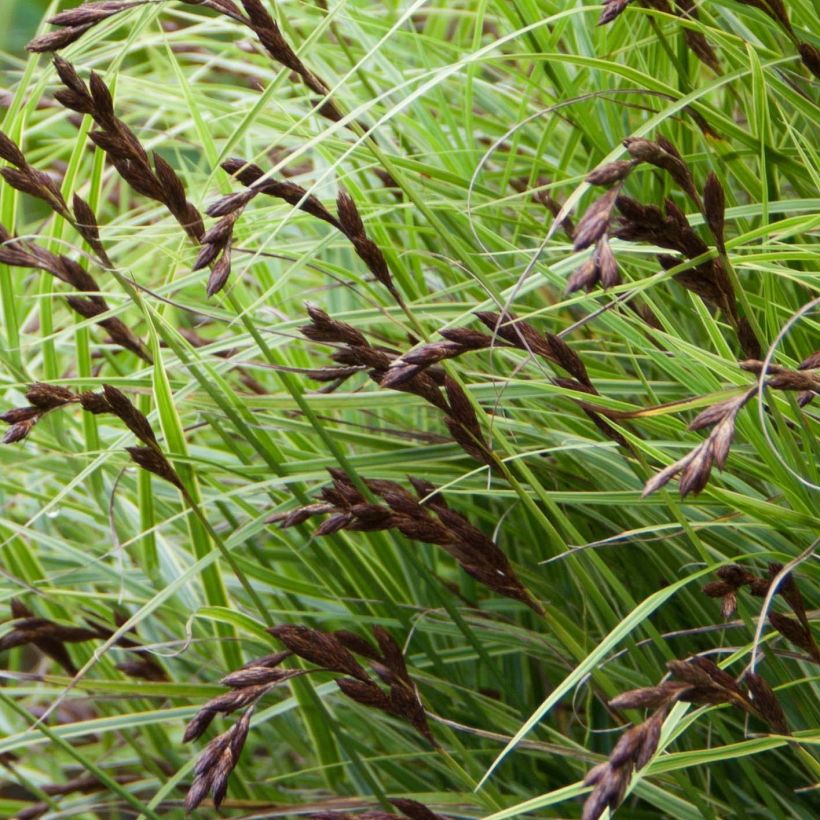

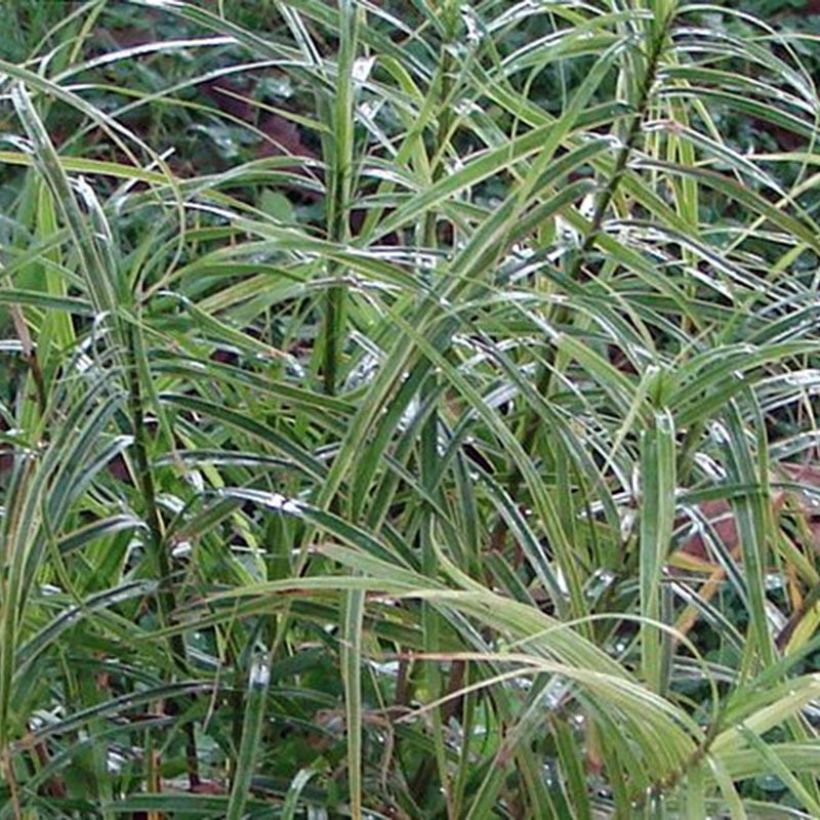

Flowering
Foliage
Plant habit
Botanical data
Carex
muskingumensis
Oehme
Cyperaceae
American Sedge
North America
Other Carex
Planting and care
Plant Carex muskingumensis in a planting hole that is 20x20x20cm (8x8x8in) in size. If your soil is heavy, mix some compost with the crumbled soil, partially fill the hole, and place your plant so that the top of the root ball is covered with 3cm (1in) of soil. Firmly press the soil down and water generously to eliminate air pockets. In dry weather, you will need to water regularly for a few weeks to facilitate the establishment of your young plant. This grass remains decorative all year round but renews its foliage in spring. We recommend pruning your plants to 10cm (4in) in late January or early February to tidy the plant and to make room for new foliage.
Planting period
Intended location
Care
This item has not been reviewed yet - be the first to leave a review about it.
Shade-loving perennials
Haven't found what you were looking for?
Hardiness is the lowest winter temperature a plant can endure without suffering serious damage or even dying. However, hardiness is affected by location (a sheltered area, such as a patio), protection (winter cover) and soil type (hardiness is improved by well-drained soil).

Photo Sharing Terms & Conditions
In order to encourage gardeners to interact and share their experiences, Promesse de fleurs offers various media enabling content to be uploaded onto its Site - in particular via the ‘Photo sharing’ module.
The User agrees to refrain from:
- Posting any content that is illegal, prejudicial, insulting, racist, inciteful to hatred, revisionist, contrary to public decency, that infringes on privacy or on the privacy rights of third parties, in particular the publicity rights of persons and goods, intellectual property rights, or the right to privacy.
- Submitting content on behalf of a third party;
- Impersonate the identity of a third party and/or publish any personal information about a third party;
In general, the User undertakes to refrain from any unethical behaviour.
All Content (in particular text, comments, files, images, photos, videos, creative works, etc.), which may be subject to property or intellectual property rights, image or other private rights, shall remain the property of the User, subject to the limited rights granted by the terms of the licence granted by Promesse de fleurs as stated below. Users are at liberty to publish or not to publish such Content on the Site, notably via the ‘Photo Sharing’ facility, and accept that this Content shall be made public and freely accessible, notably on the Internet.
Users further acknowledge, undertake to have ,and guarantee that they hold all necessary rights and permissions to publish such material on the Site, in particular with regard to the legislation in force pertaining to any privacy, property, intellectual property, image, or contractual rights, or rights of any other nature. By publishing such Content on the Site, Users acknowledge accepting full liability as publishers of the Content within the meaning of the law, and grant Promesse de fleurs, free of charge, an inclusive, worldwide licence for the said Content for the entire duration of its publication, including all reproduction, representation, up/downloading, displaying, performing, transmission, and storage rights.
Users also grant permission for their name to be linked to the Content and accept that this link may not always be made available.
By engaging in posting material, Users consent to their Content becoming automatically accessible on the Internet, in particular on other sites and/or blogs and/or web pages of the Promesse de fleurs site, including in particular social pages and the Promesse de fleurs catalogue.
Users may secure the removal of entrusted content free of charge by issuing a simple request via our contact form.
The flowering period indicated on our website applies to countries and regions located in USDA zone 8 (France, the United Kingdom, Ireland, the Netherlands, etc.)
It will vary according to where you live:
- In zones 9 to 10 (Italy, Spain, Greece, etc.), flowering will occur about 2 to 4 weeks earlier.
- In zones 6 to 7 (Germany, Poland, Slovenia, and lower mountainous regions), flowering will be delayed by 2 to 3 weeks.
- In zone 5 (Central Europe, Scandinavia), blooming will be delayed by 3 to 5 weeks.
In temperate climates, pruning of spring-flowering shrubs (forsythia, spireas, etc.) should be done just after flowering.
Pruning of summer-flowering shrubs (Indian Lilac, Perovskia, etc.) can be done in winter or spring.
In cold regions as well as with frost-sensitive plants, avoid pruning too early when severe frosts may still occur.
The planting period indicated on our website applies to countries and regions located in USDA zone 8 (France, United Kingdom, Ireland, Netherlands).
It will vary according to where you live:
- In Mediterranean zones (Marseille, Madrid, Milan, etc.), autumn and winter are the best planting periods.
- In continental zones (Strasbourg, Munich, Vienna, etc.), delay planting by 2 to 3 weeks in spring and bring it forward by 2 to 4 weeks in autumn.
- In mountainous regions (the Alps, Pyrenees, Carpathians, etc.), it is best to plant in late spring (May-June) or late summer (August-September).
The harvesting period indicated on our website applies to countries and regions in USDA zone 8 (France, England, Ireland, the Netherlands).
In colder areas (Scandinavia, Poland, Austria...) fruit and vegetable harvests are likely to be delayed by 3-4 weeks.
In warmer areas (Italy, Spain, Greece, etc.), harvesting will probably take place earlier, depending on weather conditions.
The sowing periods indicated on our website apply to countries and regions within USDA Zone 8 (France, UK, Ireland, Netherlands).
In colder areas (Scandinavia, Poland, Austria...), delay any outdoor sowing by 3-4 weeks, or sow under glass.
In warmer climes (Italy, Spain, Greece, etc.), bring outdoor sowing forward by a few weeks.

































